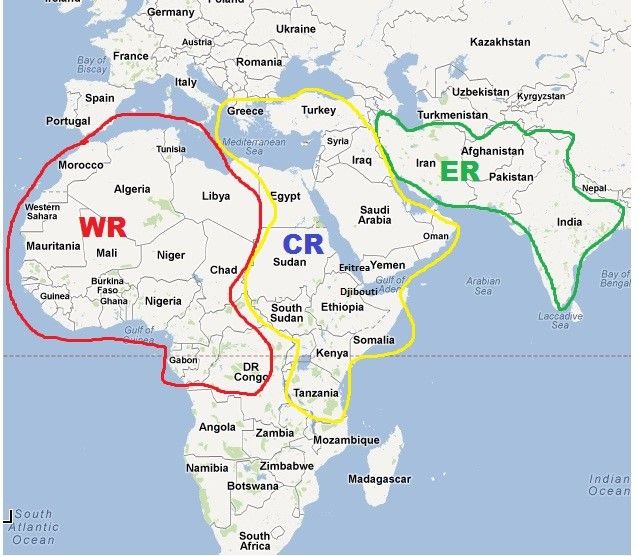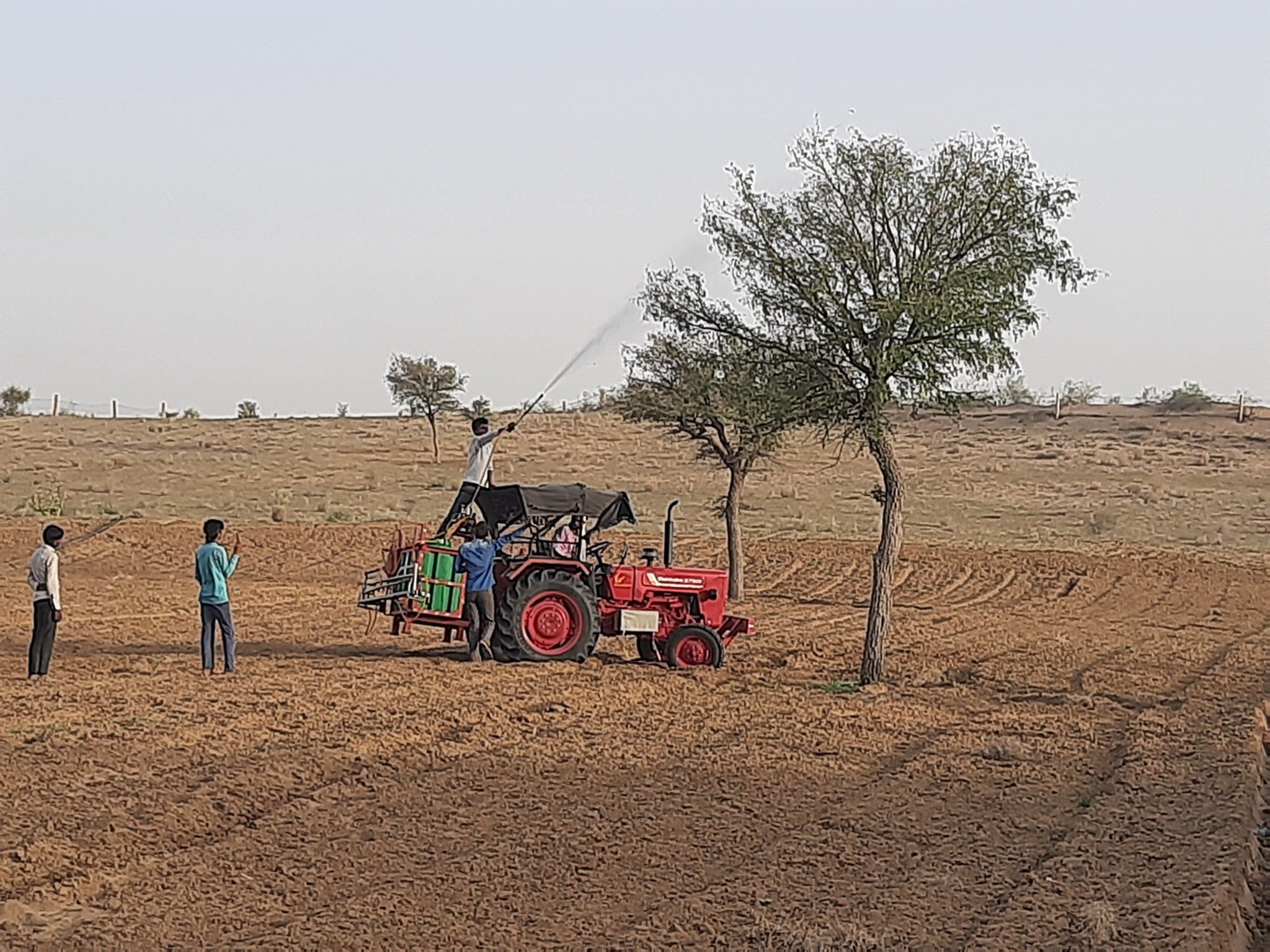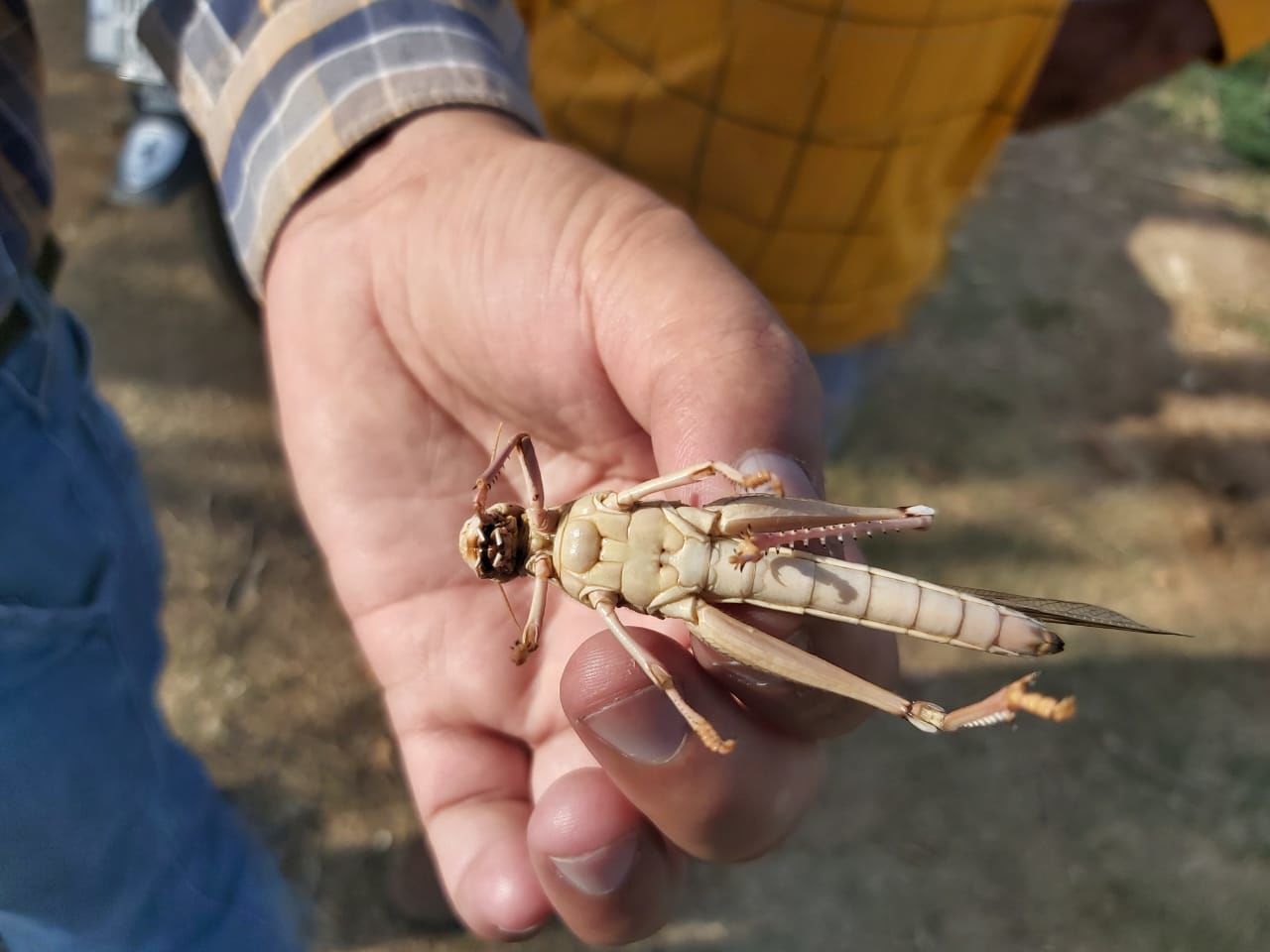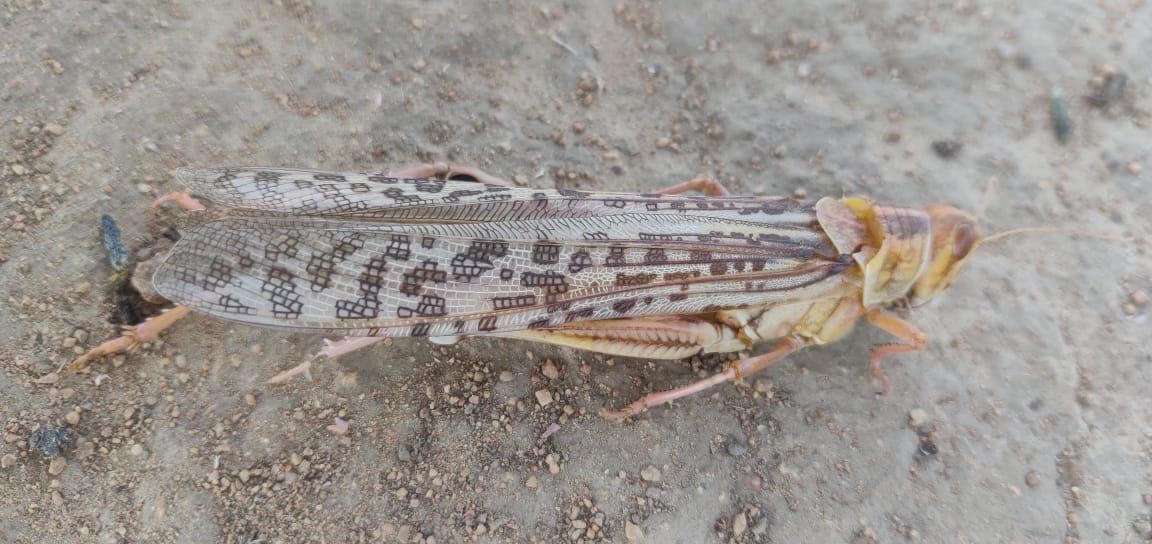Locusts have damaged crops in five states so far. The Centre has issued a warning to 12 states
The locusts swarming across 50 districts have been unstoppable. The Locust Warning Organisation has cautioned that the outbreak of new breed of locusts can be even more formidable than the present one

India is battling the worst desert locust outbreak in three decades. The insects have now damaged crops in Rajasthan, Madhya Pradesh, Uttar Pradesh, Gujarat and Maharashtra. The Centre has issued a warning to 12 states.
These desert locusts entered India via Rajasthan and Gujarat from Pakistan. They change their direction with the wind. After Rajasthan, these locusts entered Madhya Pradesh and Uttar Pradesh. As per the experts, these locusts may soon reach Maharashtra, Odisha and Punjab, Haryana and even Delhi. Gujarat faces a locust attack every year.
As per the Directorate of Plant Protection, Quarantine and Storage, which falls under the Union Ministry of Agriculture, India has been fielding locust attacks since 1812.
The Locust Warning Organisation, which falls under the Ministry of Agriculture, works towards controlling locusts in India. Dr KL Gurjar, deputy director, Locust Warning Organisation (LWO), informed: “Locust attacks in India are restricted to Rajasthan and Gujarat. These are desert locusts that come over from Pakistan. They come into the desert for breeding. The breeding time of these locusts varies from June-July to October-November.”

More than two lakh square kilometres of area in India falls under the scheduled desert area. The Locust Warning Organisation and 10 Locust Circle Offices (LCO) have been set up by the government in Rajasthan (Jaisalmer, Bikaner, Phalodi, Barmer, Jalore, Churu, Nagaur, Suratgarh) and Gujarat (Palampur and Bhuj).
Dr Gurjar said: “A number of centres of locust warning organisation have been set up in Rajasthan and Gujarat for control of locusts. These insects are monitored from here. Locusts follow the prevalent wind current.”
Amid the arrival of large locust swarms across Western and North-western India, the Department of Agriculture and Farmers Welfare (DAC & FW) has accelerated the operations to control locusts in affected states like Rajasthan, Punjab, Gujarat and Madhya Pradesh. Till date, these locust swarms are active in Barmer, Jodhpur, Nagaur, Bikaner, Ganganagar, Hanumangarh, Sikar, Jaipur districts of Rajasthan and Satna, Gwalior, Sidhi, Rajgarh, Betul, Dewas, Agar Malwa districts of Madhya Pradesh.
The swarms decimate most of the crops like maize, moong, urad, sugarcane, vegetables, mangoes, etc. Wherever they find greenery, they attack and destroy the entire crop.

Initially, when the locusts had entered Rajasthan, the experts from the Integrated Management Centres were called in several states across the country. They were recently called to Jaisalmer. “We went to Jaisalmer in April. Now when the locusts have reached Madhya Pradesh and Uttar Pradesh, we are proceeding to Madhya Pradesh and Jhansi for locust control,” informed Rajeev, who works with the organisation.
At present, 200 Locust Circle Offices (LCO) are carrying out surveys and control work in coordination with the district administration and agricultural field machinery of the affected states. Locust control is in full swing in coordination with state agriculture departments and local administration.
So far, locust control work has been carried out in 21 districts of Rajasthan, 18 districts of Madhya Pradesh, one district of Punjab and two districts of Gujarat. To effectively regain control of locusts beyond desert areas, temporary control camps are set up at Ajmer, Chittorgarh and Dausa in Rajasthan, Mandsaur, Ujjain and Shivpuri in Madhya Pradesh and Jhansi in Uttar Pradesh.

Locusts enter Pakistan through Iran
In February this year, Pakistan had declared a national emergency in view of the locust attacks. Thereafter, from April 11, the locusts had begun coming to India. Gujarat, Madhya Pradesh and Uttar Pradesh have also been facing a similar situation for the last few months. In December 2019, locusts had destroyed over 25,000 hectares of crops in Gujarat.
The area affected by the outbreak of desert locust is about 30 million square kilometres, including about 64 countries or parts there on. These include the Northwestern and East African countries, the Arabian Peninsula, Southern Soviet Republic of Russia, Iran, Afghanistan and Indian sub-continent countries. During the outbreak-free period, locust is found in large parts of the arid and semi-arid region in small numbers, which later on as swarms, spreads from the Atlantic Ocean to North-West India. Thus, they are found in an area of about 16 million square kilometres across 30 countries.
So far (up to May 26), actions have been taken by the LCO in coordination with the district administration and the state agriculture departments in Rajasthan, Punjab, Gujarat and Madhya Pradesh, to control locusts over 47,308 hectares area across 303 locations. Eighty-nine fire tenders for spraying pesticides to effectively control locusts; 120 survey vehicles; 47 control vehicles with spraying equipment and 810 tractor-mounted sprayers were deployed during different days as per requirement.

VK Singh, the deputy director (crop protection), Uttar Pradesh Agriculture Department, informed: “So far, a swarm of locusts was seen in the Moth tehsil of Jhansi in Uttar Pradesh, which was driven out by the control team. It is likely to reach Jalaun and Hamirpur as per the direction of the wind. Another locust swarm was seen in Karma village of Ghorawal in Sonbhadra, which is seen moving towards the Aharura forest in Mirzapur. Yet another swarm was spotted in Mirzapur which had moved towards Madhya Pradesh.”
So, if the locusts have reached Sonbhadra, these locusts can then enter Jharkhand and Chhattisgarh and also wreak havoc in Bihar via Chandauli. So far, locusts have reached Nagpur in Maharashtra.
Vivek Kumar, a crop protection officer at Jhansi, said: “We are trying to drive the locusts throughout the day and spray pesticides at night. They simply follow the wind.”
In Madhya Pradesh, the locust population is expanding every day. BP Sutrakar, the locust control in charge of Chattarpur district, said: “The number of locusts is increasing every day. They are driven away through loud noise during the day and spraying pesticides at night. Had they been controlled in Rajasthan, they would not have reached further, but they could not be controlled due to the lockdown.”

Locusts sighted much before
The locust swarms enter India’s scheduled desert region through Pakistan in June/July, with the onset of monsoon for summer breeding. This year, the entry of these hoppers and pink locusts has had been long ahead of time, which is allegedly due to the presence of an uncontrolled residual population of locusts in Pakistan from last season.
Onset had occurred in April
The border districts of Rajasthan and Punjab are reported to have sighted the locust hopper from April 11, 2020, and pink immature adult locusts from April 30, 2020, which are being controlled. The pink immature adults fly high and travel long distances from one place to another in a day with the western winds coming from Pakistan. Most of these pink immature adults stay on trees at night and fly mostly during the day.
A high-level virtual meeting on desert locusts among South-West Asian countries was held on March 11, 2020 at the office of the FAO representative in India. The meeting was attended by the representatives of four member countries (Afghanistan, India, Iran and Pakistan) and plant protection division of the FAO, Rome. The meeting was attended by Shri Kailash Chaudhary, Minister of State for Agriculture and Farmers Welfare and Secretary, DAC&FW. In this meeting, it was decided to hold periodical virtual meetings of technical officers of member countries every Monday through Skype and nine such meetings have been held so far. Advisories have been issued to the states of Rajasthan, Gujarat, Haryana and Punjab on necessary measures for attack and effective control of locust and use of effective pesticides in crop areas.

Can cause further devastation
As per the FAO’s locust status update on May 21, 2020, the current situation in East Africa continues to be extremely alarming where it remains an unprecedented threat to food security and livelihoods. The new locust swarms will enter the summer breeding zones of Sudan and West Africa besides along both sides of the Indo-Pak border. As the vegetation dries up, more swarms will be ready and move towards both sides of the Indo-Pak border from these areas. Good rainfall has been forecast during the early days of June in areas bordering the Indo-Pak border, which is conducive to laying eggs for them.
Caused a major loss last year
During the year 2019-20, there was a massive locust attack in India, which was successfully controlled. From May 21, 2019 to February 17, 2020, a total area of 4,03,488 hectares was treated and locusts were controlled. At the same time, the state agriculture departments of Rajasthan and Gujarat had coordinated to control the locusts in the cultivated areas of the state. During 2019-20, control works were carried out 3,93,933 hectares of area in 11 districts of Rajasthan; in 9,505-hectare area of two districts of Gujarat and 50-hectare area of one district of Punjab. The senior locust forecasting officer of FAO, who had visited India on January 16, 2019, had also appreciated India’s efforts in controlling locusts.

Lays 150 eggs at a time
According to the FAO, a locust lays up to 150 eggs at a time. It is said that locusts grow rapidly in numbers. Their first generation increases by 16 times, the second generation 400 times and the third generation by 16,000 times. Locusts are usually found in places where there is less than 200 mm of rain throughout the year. So, they are found in West Africa, Iran and Asian countries. Desert locusts are usually found in an area of 1.6 million square km between West Africa and India.
The locust attacks faced in India so far
Between 1926 and 1931, there was a loss of Rs 10 crore worth of crops due to the locust attacks. Thereafter, the locusts had attacked between 1940 and 1946, and 1949 and 1955 causing a loss of Rs 2 crores each time. Between 1959 and 1962, the locust swarm had destroyed crops of Rs 50 lakh.
According to official statistics, there had been attacks of locusts after 1962 that had lasted for three or four consecutive years. But, in 1978, 167 swarms had attacked and 172 in 1993. It had caused a loss of Rs 2 lakh in 1978 and Rs 7.18 lakh in 1993. Even after 1993, there were locust attacks in 1998, 2002, 2005, 2007 and 2010, but they were very small.
The locust eggs need to be destroyed before the monsoon
The locusts swarming across 50 districts of the country are not showing any sign of abatement. The Locust Warning Organisation (LWO) has cautioned that the outbreak of a new breed of locusts can be even more formidable than the present locust problem.
KL Gurjar, deputy director of the LWO, informed: “An adult female locust lays 80 to 90 eggs thrice in its three-month life cycle. If these eggs are not destroyed, four to eight crore locusts will appear in a swarm per square kilometer. The kharif crop of farmers is also ready during July, August and September, which can be decimated by these swarms in no time.”
He also said that as soon as the monsoon will set in, their breeding will be rampant in the vacant fields. The new breed will be a nuisance due to the laying of eggs in the vacant fields as the process of giving eggs would continue for two more months. So, the coming up of new kharif crop and new generation of locusts would almost coincide.

